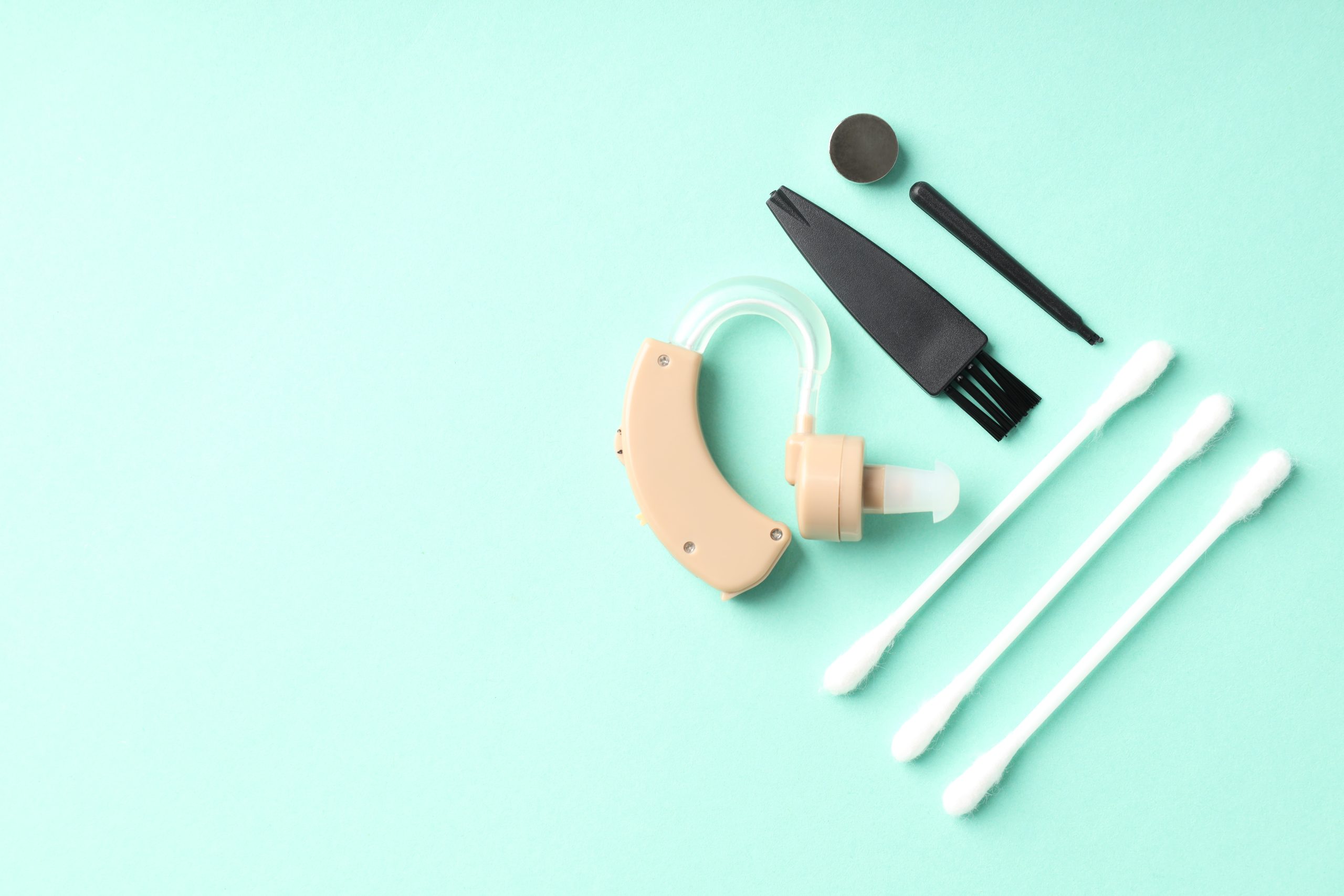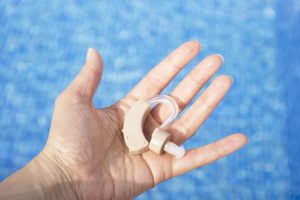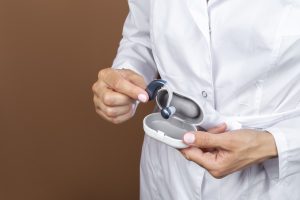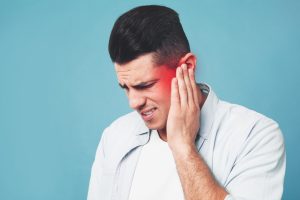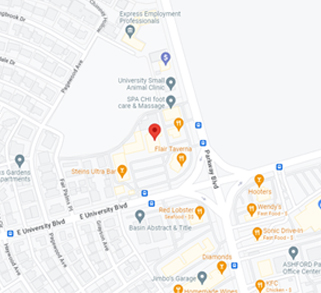Maintaining the optimal condition of your hearing aids is essential for long-term function and clear sound. Daily maintenance is crucial for rechargeable, in-the-ear, or behind-the-ear devices. A hearing aid cleaning kit is the best method to ensure they remain hygienic, functioning, and clean.
Various hearing aid cleaning tools, usually included in a good package, can remove earwax, moisture, and dirt from delicate hearing aid components without causing damage. We at Roger Clark Hearing know how important your hearing aids are to your daily existence. Because of this, our professionals at the Waco audiology department and hearing center advise following a suitable cleaning schedule. In more detail, let’s examine the six necessary items in your daily care kit.
The 6 Essential Cleaning Tools Explained
For the best daily care, every user of hearing aids should have the following six cleaning supplies.
1. Resound Hearing Aid or Cleaning Brush for Cleaning
A hearing aid cleaner is essential for getting rid of dust and earwax. It’s gentle and made to safely clean battery compartments and microphone ports without causing surface scratches. Some models even have an integrated magnet for handling small batteries.
Use Tip – Gently brush the area around the cracks every day to remove any visible wax. To avoid dropping your hearing aid, always do this over a spotless surface.
2. Wax Loop and Pick Tool
The wax pick, also known as the loop tool, removes hardened wax trapped in sound exits. This equipment is essential for preserving performance because earwax accumulation can obstruct sound channels and damage hearing quality.
Use Tip – Remove debris by carefully inserting the loop end into the sound outlet’s gap. To avoid harm, don’t insert it too deeply.
3. Vent Cleaner (Ventilation Tube Cleaner)
Small ventilation holes in many hearing aids allow airflow and avoid moisture buildup. However, these vents may become clogged over time. A vent cleaner or thin wire tool can securely clear these passageways.
Use Tip – Gently push the vent cleaner through the tube or hole to remove wax or debris. Depending on how frequently you wear your hearing aids, do this once or twice a week.
4. Dry Cloths or Cleaning Wipes
Microfiber towels or alcohol-free cleaning wipes are ideal for fast surface cleaning. They eliminate the oils, perspiration, and debris that build up from handling your hearing aids all day.
Use Tip – Clean your hearing aids before putting them away every night. Avoid solutions containing alcohol, as they can harm protective coatings.
5. Dehumidifier or Dryer for Hearing Aids
One of the biggest threats to hearing aids is moisture. An electric dryer or hearing aid cleaning equipment can eliminate the humidity that accumulates during regular use. These hearing aid cleaner machines use UV light or mild heat to sterilize and dry electronics.
Use Tip – Put your hearing aids in the cleaner for the entire night. Frequent drying extends the life of devices and helps prevent corrosion, particularly in humid situations.
6. All-in-One or Multi-Tool Cleaning tool
A small multitool containing a brush, wax loop, and magnet is frequently included in an all-in-one hearing aid cleaning kit. It’s the perfect choice when traveling or needing to clean quickly while away from home.
Use Tip – To do quick cleanups while on the go, keep this tool in your purse or carrying case to do quick cleanups while on the go.
When and How Often to Use Each Tool
Knowing when and how often to clean your hearing aids ensures maximum effectiveness and hygiene. This is a basic cleaning schedule.
Daily – Use the cleaning brush and wipes to remove visible oils and earwax.
A Few Days – Clean the sound outlets with the wax pick or loop tool every few days.
Every Week – Use a vent cleaner to clean the vent and leave the devices in a drying box or a machine that cleans hearing aids overnight.
Monthly – Schedule a professional cleaning with your hearing aid specialist once a month to keep internal components clear of debris.
Practices and Tips for Safe Cleaning
Use these best practices to get the most out of your hearing aid cleaning supplies.
- Before cleaning, always turn off your hearing aids and take out the batteries.
- Steer clear of water. Hearing aids should never be cleaned under running water or submerged.
- Use only the appropriate tools. To remove wax, avoid using needles, pins, or toothpicks.
- Clean over a towel or other soft surface to avoid damage if dropped.
- Your hearing aids should be kept dry, overnight in a dehumidifying case.
- Use caution. Microphones and receivers are examples of fragile components.
- Routine examinations. For routine upkeep and thorough cleaning, see your Waco audiology specialist.
Roger Clark Hearing – Your Go-To Source for Better Hearing
Maintaining your hearing aids doesn’t have to be difficult. By using the proper hearing aid cleaning kit, you can ensure they survive for years and provide constant sound quality. Roger Clark Hearing may assist you with cleaning supplies, expert maintenance, or device modifications.
From device fittings to regular cleanings and repairs, our Waco hearing center and team of skilled hearing aid specialists offer comprehensive care. Contact us now to learn more about tools and cleaning products made specifically for your hearing aid model!
FAQs
How frequently should my hearing aids be cleaned?
To remove surface particles, clean your hearing aids daily using a brush and wipes. A more thorough cleaning should be performed weekly with vent tools and wax picks. Additionally, make an appointment with a hearing aid specialist for professional maintenance at least once every few months.
Can I clean my hearing aids with alcohol or water?
No. Alcohol and water can harm hearing aids’ sensitive electronic parts. Use soft brushes and alcohol-free cleaning wipes from a professional hearing aid cleaning kit for safekeeping.
What machine cleans hearing aids, and is it essential?
A hearing aid cleaning (or dryer) eliminates moisture and sanitizes your equipment using UV light or mild heat. It benefits people with active lifestyles or who live in humid settings. It significantly prolongs the life of your hearing aids, but it’s not required.
Why can earwax accumulation affect hearing aids?
Earwax can obstruct the receiver or microphone apertures, making sound less clear and producing feedback. Frequent use of a wax loop or a Resound hearing aid cleaning brush keeps these components clear and ensures peak function.
Where in Waco can I get expert cleaning for my hearing aids?
Go to Roger Clark, your reliable Waco center, for expert cleaning and maintenance. Our Waco audiology specialists employ cutting-edge equipment and methods to ensure your hearing aids continue to function flawlessly.
